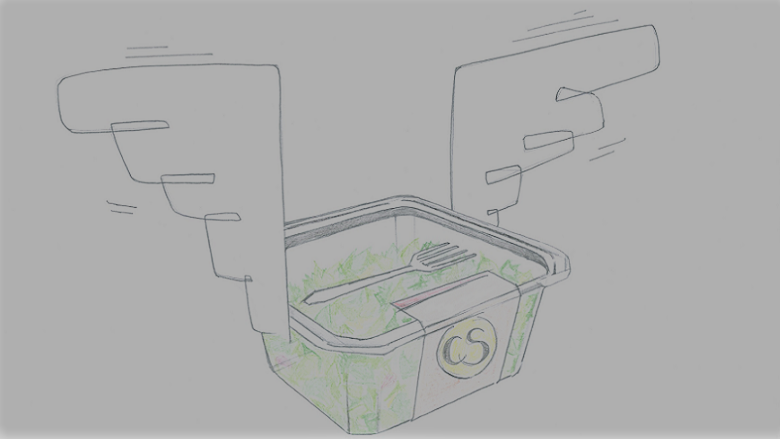
Innovation in food may seem obscure. There are only so many ways you can cut a carrot and you cannot simply reinvent the pig. But in an increasingly busy and wealthy world, the nature of demand for food is changing and scope exists for innovation in the way we deliver food to match people’s lifestyles. Many consumers are increasingly willing to pay for either convenience or an indulgent experience in their dining.
In fact, millions of consumers in the EU are paying quite a premium for products that suit these advanced consumer needs.
Specialized consultancies (such as the Food Practice Ltd., Wageningen U&R, or Avure and Tastelab in the US) are helping food manufacturers innovate in this segment by adapting packaging/labeling that targets consumers seeking healthy foods in high value, ready-to-eat segments.
With demand for such new segments rapidly growing across Europe, Croatia seems well-poised to exploit this trend. In fact, a few firms are already doing just that - making a lot of money in the process (with some even seeing profit margins north of 10%).
As an economist, such figures are enough to make my mouth water. So why aren’t more farmers and firms champing at the bit to get a piece of this economic pie?
Tradition. It often gets in the way.
The local food industry is dead
After centuries of local tradition prevailing in the agriculture sector, the food industry is rapidly changing – leaving traditionally-minded farmers in the dust. Agriculture and food – for better or worse – is no longer a local business.
Global trade in primary agricultural produce and food products exceeded $1 trillion in 2016 , making it extremely unlikely that the food you eat is produced by the farmer down the road.
While this is great news for those of us wishing to ensure global food security for the world’s 7.5 billion people, it can mean quite a different thing for a Croatian farmer growing commodity grains or a food processor producing basic goods.
Global trade in both food production and the processing industry is increasingly dominated by a select set of Multi-National Corporations (MNCs,) such as Cargill, Nestle, Tysons, and Danone – which control much of the global food supply and the industry’s most recognized brands. Moreover, while the economies of scale necessary to compete with these firms are already large, they are also increasing - with much of the industry consolidating in the face of stiff competition and profit margins that approach zero percent.
These trends pose significant risk to Croatia, which is focused on producing commodities like corn. There’s simply too much of it. So much of it, in fact, that you commonly find it on a slice of pizza.
So what does this all mean for countries like Croatia, whose GDP (~$50 billion) is just under that of Unilever’s annual revenue (~$52 billion)?

The implication here is that Croatia – like much of the rest of the world – stands to be subject to poor terms, transforming into a low-level supplier of commodities and/or having their brands bought from under them. Croatia has virtually no option: evolve to meet the demands of newer segments or submit and accept a low spot in the value chain that supplies these MNCs.
To achieve this evolution however, it is important to look for trends in the market to see where new demand is being created.
A new beginning
Whereas much of the food industry is now controlled by MNCs, their domain is stockable products (canned, dried or frozen). They are somewhat less competitive at delivering fresh foods - where independent farmers and small-and-medium enterprises are recognizing some comparative advantages. In this model, fresh foods also tend to have up to 70% higher value as opposed to their stockable counterparts.
Let’s look at the consumer prices of fresh and frozen berries in the United States: $5.77/lb versus $3.39/lb. Which product are farmers and firms more likely to benefit from? Who captures that extra value?
Firms like Farmdrop – a London-based startup that delivers fresh food directly from producers to consumers at their homes – have cashed in on such ‘fresh’ models and are growing rapidly. In Croatia, there are some that have recognized the value in fresh produce too. Take for instance the handful of fresh oyster producers in Mali Ston. Their margins are a savory 17%.
However, not everyone can cultivate oysters and other ‘fresh’ business models generally require demand conditions that are not yet present in Croatia. So this means Croatia must share with its regional neighbors. Remember that even though fresh foods may not be as ‘global’ as stockables, firms that can obtain quick access to high value neighboring markets may thrive in this new industry.
While the old food industry may be dead, its spirt is taking flight.
Yes, it is true. The food industry has taken flight. In fact, this time of year, fresh produce often makes its counter-seasonal migratory flight to the high value markets of Western Europe. The industry has developed a global value chain that can ship fresh produce to high value markets in Europe constantly. Daily commercial flights from places like Kenya and Cairo to destinations like Heathrow and Holland allow small farmers to reap profits. With different harvesting periods, Croatia can compete in this same value chain. However, if it wants to reach its full potential, the private sector will need to take the lead in food innovations.
After witnessing the quality of Croatian produce and the resolve of its industry, I'm certain this country can exploit the opportunities presented by these new segments.
Considering this bright future in “fresh,” “convenient,” and “indulgent” segments, I invite you to join me in a “Toast ” to World Food Day. Or, if you prefer, have a fresh salad.

Sketch courtesy of Igor Matanovic.


Join the Conversation